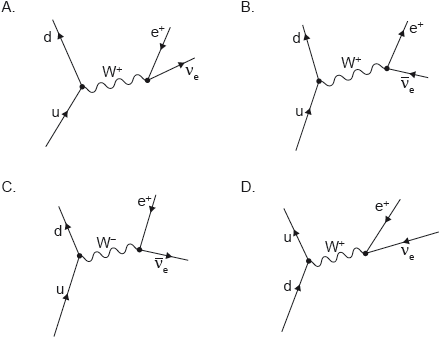| Date | May 2021 | Marks available | 2 | Reference code | 21M.2.SL.TZ2.4 |
| Level | Standard level | Paper | Paper 2 | Time zone | 2 |
| Command term | Explain | Question number | 4 | Adapted from | N/A |
Question
During electron capture, an atomic electron is captured by a proton in the nucleus. The stable nuclide thallium-205 () can be formed when an unstable lead (Pb) nuclide captures an electron.
Write down the equation to represent this decay.
The neutron number N and the proton number Z are not equal for the nuclide . Explain, with reference to the forces acting within the nucleus, the reason for this.
Thallium-205 () can also form from successive alpha (α) and beta-minus (β−) decays of an unstable nuclide. The decays follow the sequence α β− β− α. The diagram shows the position of on a chart of neutron number against proton number.
Draw four arrows to show the sequence of changes to N and Z that occur as the forms from the unstable nuclide.
Markscheme
✓
✓
Reference to proton repulsion OR nucleon attraction ✓
strong force is short range OR electrostatic/electromagnetic force is long range ✓
more neutrons «than protons» needed «to hold nucleus together» ✓
any α change correct ✓
any β change correct ✓
diagram fully correct ✓
Award [2] max for a correct diagram without arrows drawn.
For MP1 accept a (−2, −2 ) line with direction indicated, drawn at any position in the graph.
For MP2 accept a (1, −1) line with direction indicated, drawn at any position in the graph.
Award [1] max for a correct diagram


